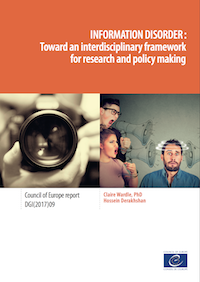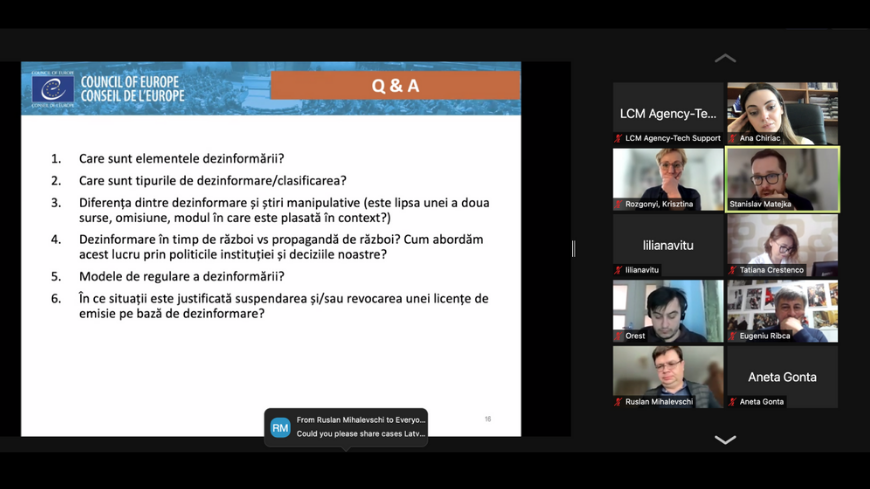On 24 March 2022 a policy workshop on “European approaches to disinformation through the lens of media regulatory authorities’ policies” for the Members of the national audiovisual regulatory authority, the Audiovisual Council was organised by the Council of Europe.
The workshop gathered the members and key staff of the Audiovisual Council of the Republic of Moldova, raising key issues and challenges in monitoring and regulating disinformation identified at the national level among media service providers, more so in the context of the Emergency State instituted in the Republic of Moldova starting February 24th.
The discussions focused on the regulation process and policymaking concerning information disorder, as guided by the EU and Council of Europe standards and practices. Additionally, the European Affairs Coordinator from the The Office of the Slovak Council for Broadcasting and Retransmission offered a new perspective for the Audiovisual Council on the overview of activities conducted at the national level by the Slovakian regulatory authority on tackling disinformation.
The online expert meeting took place within the framework of the Council of Europe Project “Support for Media Pluralism and Freedom of Expression in the Republic of Moldova”, which is part of the Council of Europe Action Plan for the Republic of Moldova for 2021-2024.






